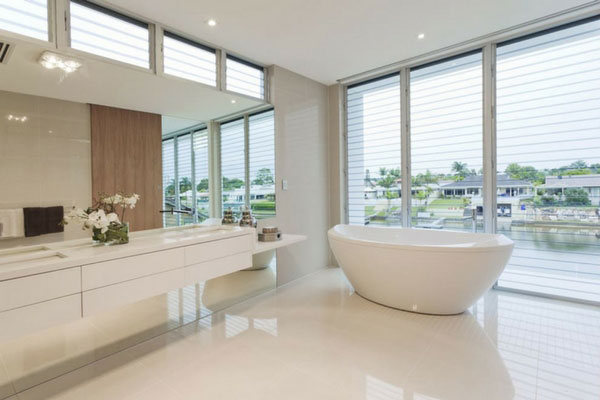When you turn on the tap to get some drinking water, step into a shower stall, lower yourself into a tub, or even load up the clothes or the dishes to let a machine do the washing, there’s a lot you’re missing.
All you know is that water is coming out, and this is letting you do whatever water related activity you have in mind. What you don’t’ see is the complex water infrastructure outside your home.
This plumbing system runs the gauntlet of hidden heaters, filters, pumps and pipes that all have to be carefully laid into place. You don’t see the engineering that went into each component that lets this easy access to water run for years or even lifetimes with no attention required from you. But it all has to start somewhere.
The First Plumbing Projects
 Indoor plumbing didn’t even start indoors. It started at the Nile River with the Ancient Egyptians. They had a big problem; it wasn’t realistic for an entire society to live just by the shore of a river, but Egypt is a desert, and the Nile was the only source of water.
Indoor plumbing didn’t even start indoors. It started at the Nile River with the Ancient Egyptians. They had a big problem; it wasn’t realistic for an entire society to live just by the shore of a river, but Egypt is a desert, and the Nile was the only source of water.
So they got creative and used clay shaped into pipes to start moving water inland. Eventually, they learned how to do this with copper.
The Romans advanced Egyptian techniques even further and made them larger and more far-reaching. Their famous aqueducts were capable of moving massive volumes of water across huge distances, from remote rivers and lakes to the populated cities and towns that needed it.
They even created large scale indoor plumbing by allowing aqueducts to branch off and flow directly into some Roman homes. They also experimented with sewage management, taking hollowed elm logs and using them as pipes to carry away human waste.
The French Forget a Lot
 With so many plumbing advancements in ancient times, you’d think that innovations would steadily pile up, but that wasn’t always the case. One spectacular example of a serious regression is the royalty of 18th century France.
With so many plumbing advancements in ancient times, you’d think that innovations would steadily pile up, but that wasn’t always the case. One spectacular example of a serious regression is the royalty of 18th century France.
Marie Antoinette, famous for her use of perfumes, didn’t just create her trademark to smell good, it was to hide her stink as well as protect her from the stink of other members of the royal court.
A total lack of indoor plumbing in even the most luxurious French palaces meant that even monarchs could only bathe about once a month. However, they were also at risk of serious illnesses, because there was no sewage disposal either.
So the height of French culture, living in palatial buildings, also had to tolerate the constant smell of both liquid and solid human waste pooling on floors, staining rugs and piling up faster than people could get rid of it.
Plumbing American Style
 Now, in modern, 21st century America, homeowners and other residents enjoy much easier and more luxurious water access than poor French royalty!
Now, in modern, 21st century America, homeowners and other residents enjoy much easier and more luxurious water access than poor French royalty!
Thanks to modern sinks, bathtubs, and showers, people can wash themselves anytime they like, rather than waiting until they can’t stand the stink anymore. And modern toilets mean every home is safe, healthy, and doesn’t stink from waste piling up.
It’s not even that big a deal when something goes wrong and needs to be fixed. There are companies like Magic Plumbing that have years of experience helping out people in San Francisco, CA with their plumbing concerns. So there’s never any reason to panic.


